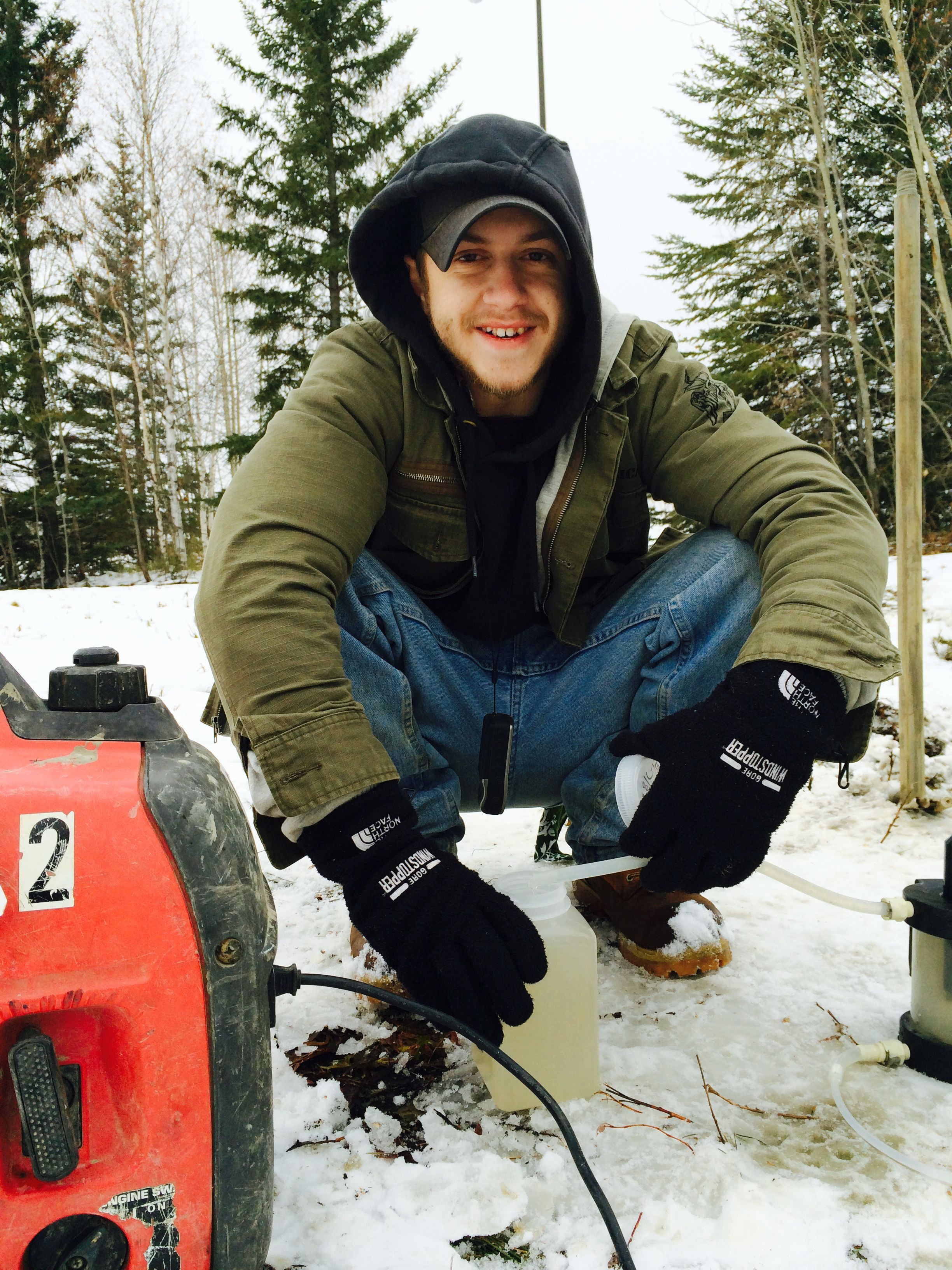Study: Sulfolane-eating microbe common in North Pole groundwater
Jeff Richardson
907-474-6284
Nov. 17, 2021

Michael Willis, who was part of a UAF team that studied microbes in North Pole-area water, poses with a sample while doing field research.
A University of Alaska Fairbanks research team has determined that a sulfolane-eating microbe is commonly found in North Pole groundwater but that it probably can’t remedy the area’s widespread contamination by the industrial solvent.
An extensive sampling project found the microorganism, a type of bacteria from the genus Rhodoferax, is present in about 70 percent of more than 100 wells tested. But the microbe is doing little to reduce sulfolane levels because it exists in a low-oxygen environment, said Mary Beth Leigh, a professor at UAF’s Institute of Arctic Biology.
The findings were published recently in the academic journal Frontiers in Microbiology. The UAF team included Leigh as well as lead author Christopher Kasanke and Michael Willis, who were UAF students at the time.
They researched microbes in the North Pole aquifer at the request of the Alaska Department of Environmental Conservation. DEC officials have sought more information about sulfolane and how it breaks down since the chemical was found in 2009 in the area surrounding a North Pole oil refinery. Not much is known about sulfolane’s degradation and health effects, even though it’s commonly used around the world.
The microbes’ abundance doesn’t seem tied to levels of sulfolane in North Pole area wells, Leigh said, which indicates that the bacteria probably aren’t multiplying by eating the chemical. That changes when air is injected into groundwater — a process called air sparging — which provides the dormant microbe with enough oxygen to break down sulfolane.
“We think they’re just naturally occurring,” Leigh said. “They’re just not able to eat it without oxygen.”
The discovery probably doesn’t offer a solution for North Pole’s sulfolane problems, said DEC environmental project manager Jim Fish. The underground chemical plume is vast — about 2.5 miles wide, 3 miles long and 300 feet deep. More than 600 properties have been added to the North Pole piped water system to help residents avoid contaminated well water in that footprint.
That scope makes air sparging too difficult and logistically challenging to be practical, Fish said. However, the research could help remedy smaller spills in other locations that haven’t grown to the size and depth of the contaminated area in North Pole.
“In a situation where it’s shallow, it’s easily accessible and you know the boundaries of it, something like that might be very effective,” Fish said.
ADDITIONAL CONTACT: Mary Beth Leigh, 907-474-6656, mbleigh@alaska.edu
NOTE TO EDITORS: The full paper is available at https://bit.ly/SulfolaneStudyUAF.
063-22


